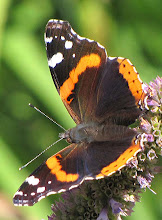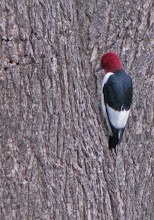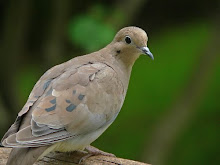"Mosquito is out,
it's the end of the day;
she's humming and hunting
her evening away.
Who knows why such hunger
arrives on such wings
at sundown? I guess
it's the nature of things."
- N. M. Boedecker, Midsummer Night Itch
This post comes with a warning. Do not read while eating. The photos below could cause serious digestive problems.
I hate bugs that eat me and my plants. The tipping point has almost come. The weeds can grow tall, and the Japanese beetles can get fat, I'm sealing myself inside away from the biting bugs. I can't stand to douse myself down with oily, stinky bug spray one more time. Earlier in the spring it was the gnats, swarms of them everywhere. You couldn't speak without swallowing several. Now its the mosquitoes, and they are especially blood thirsty this summer. This weak and listless feeling must be because I'm low on blood;)
It seems the Japanese beetles are expanding their menu every year. At first it was just the roses and the grapes. Then they discovered the coneflowers and the red clover that the Monarch butterflies depend upon. Today I see them devouring a clematis.
Before

After

Roses are of course the special favorites of the beetles. This is why I have a short rose season. On July 1 the hordes arrive and the roses are cut back to make sure they don't bloom. Not until mid September will these unwanted guests be gone and I can enjoy a few late blooming roses before the October freezes.

Here comes the tears part--well, maybe not tears just disappointments. Below is Moses' Fire. Last year was the first year it bloomed after planting the summer of 2007. I was very disappointed in it then and am not much happier with it now. The red seems muddy and too orangey, not bright, clear orange but dull, drab orange. It might improve if I could just find the perfect companion bloom that would compliment the color. I'm partial to lots of petals and ruffles and it does fit that criteria. No such thing as too frilly in my garden.

Still more tears;) These tomatoes have been sitting here with big green fruit forever. They should have been ripening weeks ago. There must be some kind of color deficiency in the soil that is preventing them from turning red. Or maybe it's the sunflower-- that might be inhibiting the ripening process;) I do have a few tiny Super Sweet Hundreds that are ripe and I've been making the most of them, but they just aren't the same as a huge, juicy Kellog's Breakfast or Black Krim. I'm hanging on to my fried green tomatoe recipes.

Mr McGregors Daughter invited us all to review our annuals and comment on the best and worst of 2009.
Cosmos were a success but not the ones I sowed myself. Tina of In the Garden was kind enough to share cosmos and nigella seeds. The cosmos did not survive long enough to be transplanted outside (sorry Tina). The nigella is growing but not blooming. Anyway back to the cosmos. I was determined to have cosmos after seeing them in everyone else's gardens and blogs so I took myself off to my local greenhouse and bought several flats. I won't be without them again no matter what I need to do to get them growing. Keep them deadheaded, the plants I neglected did not continue to bloom.

California Poppy--pretty but the blooms are small, few and far between. This probably isn't a good year to judge these poppies since it has been unusually cold and wet. If they selfseed, I may have a better idea next year. These plants are meant to grow in the heat and drought of California.

Victoria Blue Salvia, how well this does in the northern garden is proportional to how large the plant was when set out. Three of the plants I bought were over a foot tall when I got them. The smaller pants are very slow to establish and bloom. Again, this may not have been the best year to judge a plant that loves heat, sun and dry conditions.

Salvia Lady in Red, not showy enough to warrant planting here and truthfully, not showy enough to warrant a photo. I thought it would attract butterflies or hummers but other plants including perennial salvias and agastaches have proven much more attractive to insects and hummers than Lady in Red.
I always plant a few nicotiana in hopes of luring some sphinx/hawk moths to the garden. This is the low growing variety that comes in reds, pinks and whites. It always performs well and provides late season color in shadey spots but has no fragrance. Next year I want to try the tall white nicotiana .

Old faithfuls that add much needed purple and silver and never fail. I wouldn't be without these fillers stuck anywhere a patch of soil can be seen.



























































































































